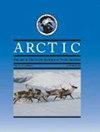Isumaqatigingniq: Building a Transformational Science Education Model to Engage the Next Generation of Inuit and Western Scientific Investigators
IF 0.8
4区 地球科学
Q4 ENVIRONMENTAL SCIENCES
引用次数: 0
Abstract
Inuit Qaujimajatuqangit (IQ), “the Inuit way of knowing,” and science each approach observation of the natural and physical world from shared yet different epistemologies. Studies that integrate IQ and science demonstrate the inherent value of using observations and findings from both to understand Arctic systems. Yet holders of IQ and scientists often do not fully comprehend the practice of the other because they think and approach observation and knowledge differently. Using the concept of Isumaqatigingniq, or “thinking together,” we will form an educational program, Isumaqatigingniq-Science, Technology, Engineering and Mathematics, (I-STEM), that will highlight and integrate studies of the narwhal and the Arctic environment undertaken with contributions from IQ and science. Program outreach will target high school students from both Inuit and non-Inuit backgrounds. Understanding existing efforts that combine these knowledge frames will hopefully inspire future collaborations by these groups. Learning through I-STEM will better equip students to address scientific themes that design, optimize, and implement collaborative observation systems. Inuit and scientific research efforts are essential for a deeper understanding of the Arctic environment. Implementing an active educational program that engages high school youth to understand the value of incorporating these two ways of knowing will help foster a future educational environment of collaboration. The educational I-STEM model will bring a new Inuit perspective to formal scientific education programs and share perspectives of science and Inuit knowledge within Inuit educational programs. Isumaqatigingniq can continue growing, incorporating new perspectives on Arctic observations and knowledge.Isumaqatigingniq:建立一个转型的科学教育模式,以吸引下一代因纽特人和西方科学研究者
因纽特人的智商(IQ),“因纽特人的认知方式”,和科学都是从共享但不同的认识论来观察自然和物理世界的。综合智商和科学的研究表明,利用两者的观察和发现来了解北极系统的内在价值。然而,智商高的人和科学家往往不能完全理解对方的做法,因为他们思考和处理观察和知识的方式不同。利用Isumaqatigingniq或“一起思考”的概念,我们将形成一个教育计划,Isumaqatigingniq-科学,技术,工程和数学(I-STEM),这将突出和整合独角鲸和北极环境的研究,并在智商和科学的贡献下进行。项目扩展将针对因纽特人和非因纽特人背景的高中生。了解结合这些知识框架的现有努力将有望激发这些团体未来的合作。通过I-STEM学习将使学生更好地掌握设计、优化和实施协作观测系统的科学主题。因纽特人和科学研究的努力对于更深入地了解北极环境至关重要。实施一项积极的教育计划,让高中生了解结合这两种认识方式的价值,这将有助于培养未来合作的教育环境。教育I-STEM模型将为正式的科学教育项目带来新的因纽特视角,并在因纽特教育项目中分享科学和因纽特知识的视角。isumaqatiningniq可以继续发展,纳入关于北极观测和知识的新观点。
本文章由计算机程序翻译,如有差异,请以英文原文为准。
求助全文
约1分钟内获得全文
求助全文
来源期刊

Arctic
地学-环境科学
CiteScore
2.30
自引率
0.00%
发文量
51
审稿时长
6-12 weeks
期刊介绍:
Arctic is a peer-reviewed, primary research journal that publishes the results of scientific research
from all areas of Arctic scholarship. Original scholarly papers in the physical, social, and biological
sciences, humanities, engineering, and technology are included, as are book reviews,
commentaries, letters to the editor, and profiles of significant people, places, or events of northern
interest
 求助内容:
求助内容: 应助结果提醒方式:
应助结果提醒方式:


